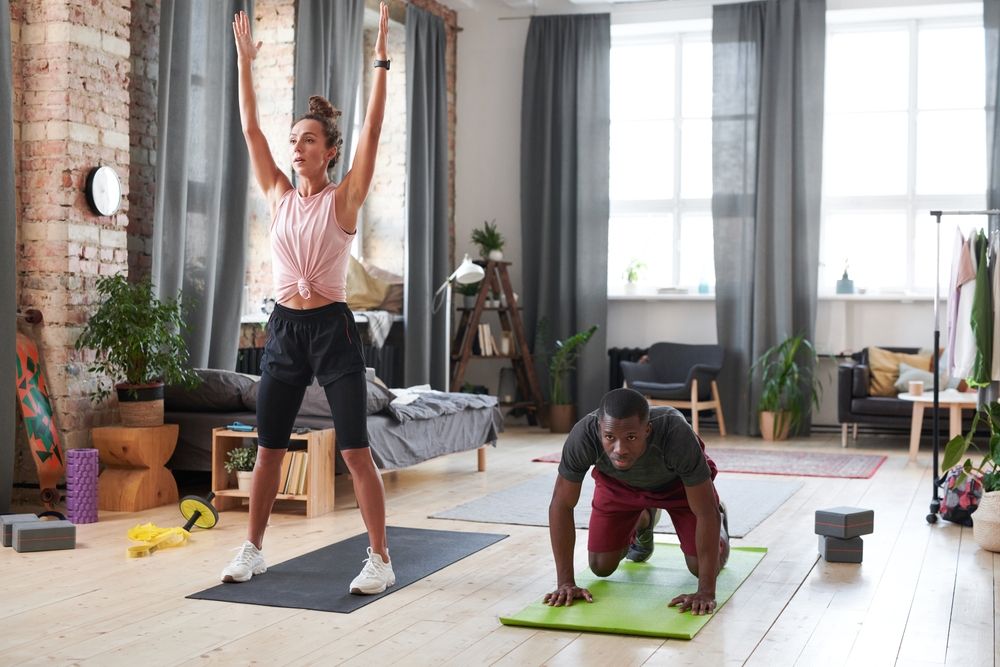
Let’s talk about the exercise we all love to hate: the burpee. It’s the fitness world’s version of pineapple on pizza—controversial but undeniably effective. Burpees are a true test of physical and mental grit. Not only do they torch calories, but they also push your strength, coordination, and endurance to the limit. If there’s a fitness superhero (or anti-hero), it’s the burpee. Wondering how many burpees it takes to prove you’re in great shape? Let’s dive in.
What makes burpees such a gold standard for fitness? For starters, they’re a total-body exercise that combines a squat, pushup, and explosive jump into one fluid (and brutal) movement. Each rep builds muscular endurance, pushing your quads, chest, shoulders, and core to their limits. And let’s not forget the mental toughness required to power through multiple reps—it’s as much a workout for your willpower as it is for your body.
Beyond the sweaty aftermath, burpees also shine in their practicality. They’re a cornerstone of functional fitness, helping to improve strength and agility for everyday movements. Plus, with the right intensity, they’re a calorie-burning powerhouse. Love them or loathe them, burpees are an undeniable fitness benchmark.
So, how many burpees does it take to be considered "in great shape"? We’ll get to that soon. First, let’s break down the anatomy of a burpee and learn how to perform them with perfect form. Then, I’ll share the best exercises to boost your burpee skills and endurance. Whether your goal is nailing five flawless reps or conquering fifty, this guide will help you get there.
How to Do a Burpee
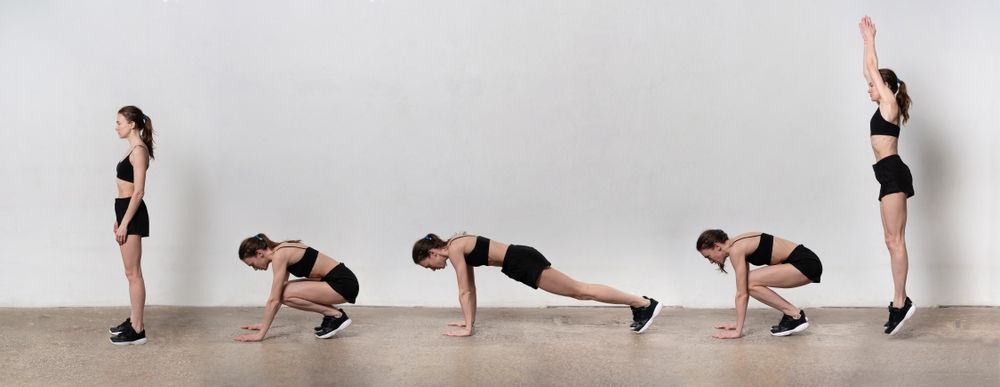
Mastering the burpee is simple in theory but a beast in execution. Here's how to do it right:
- Start Standing: Stand tall with your feet shoulder-width apart and arms at your sides.
- Drop Into a Squat: Bend your knees, push your hips back, and plant your hands on the ground in front of you.
- Kick Back: Jump both feet backward to land in a high plank position.
- Push Up: Perform a pushup, keeping your core tight and back straight. (Optional but encouraged!)
- Hop Back: Jump your feet back toward your hands, landing in a squat position.
- Explode Up: Jump straight into the air, reaching your arms overhead. Land softly to complete one rep.
How Many Burpees Signal You're in Great Shape?
So, what’s the magic number? If you can power through 50 burpees in under 5 minutes, you’re in phenomenal shape. For the burpee elites, completing 100 in 10 minutes puts you in top-tier fitness territory. As a coach, I aim for clients to maintain a strong pace of 10 burpees per minute with consistent effort. Not there yet? Don’t worry—start small, focus on building endurance, and stay consistent. Remember, burpees aren’t just a test of fitness; they’re a tool for building it, one tough rep at a time.
Best Exercises to Level Up Your Burpee Game
Want to crush your burpee workouts? Incorporate these powerful exercises into your routine to master the foundational movements and take your burpee skills to the next level.
Squat Jumps
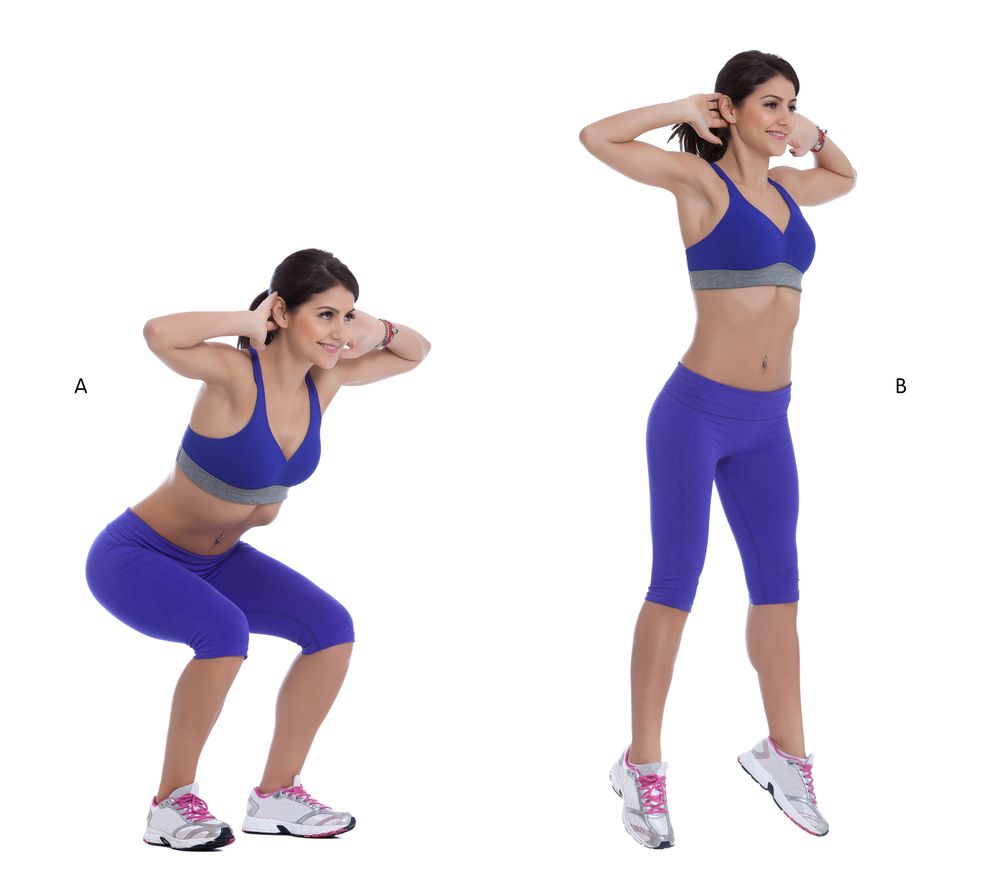
Why: Squat jumps build explosive leg power, which is critical for nailing the jump portion of your burpee. They also train your quads and glutes to handle the repetitive motion without gassing out.
How:
- Stand with your feet shoulder-width apart and arms at your sides.
- Engage your core and lower into a squat until your thighs are parallel to the floor.
- Push through your heels and explode upward into a jump, reaching your arms overhead.
- Land softly on the balls of your feet and immediately lower back into a squat.
- Repeat for the desired number of reps.
Sets and Reps: 3 sets of 12-15 reps.
Pushups

Why: A strong pushup is the backbone of a great burpee. Pushups target your chest, shoulders, and triceps, building the upper-body strength you need to crush each rep.
How:
- Start in a high plank position with your hands slightly wider than shoulder-width.
- Align your body straight from head to heels, keeping your core tight.
- Lower your chest toward the floor by bending your elbows at a 45-degree angle.
- Pause briefly when your chest is just above the ground.
- Push back up to the starting position, fully extending your arms.
- Repeat for the desired number of reps.
Sets and Reps: 3 sets of 10-15 reps.
Squats
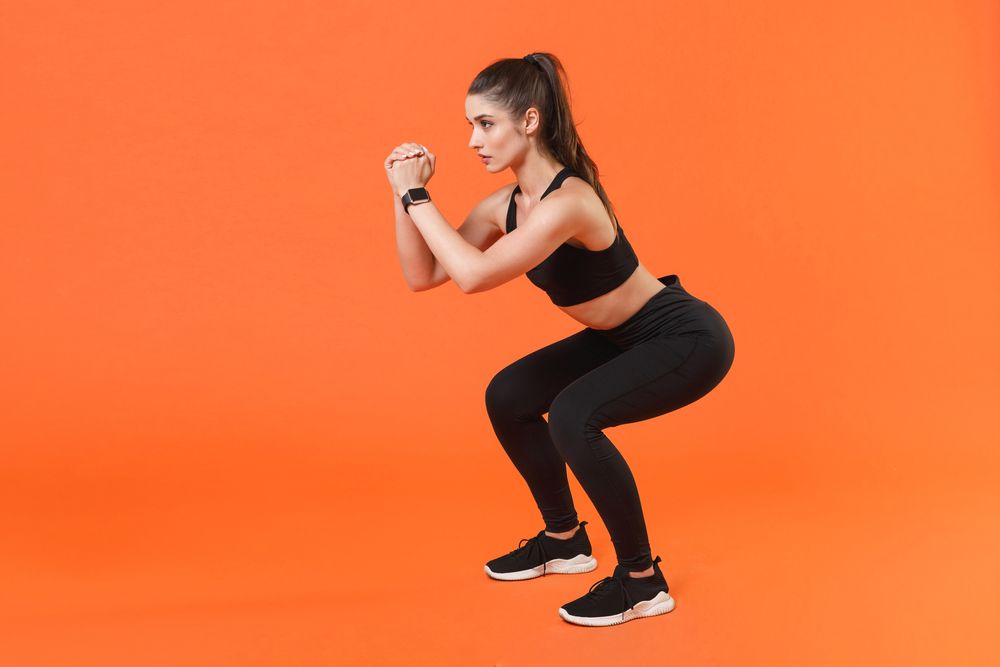
Why: Squats strengthen your legs and improve mobility, helping you transition smoothly between a burpee's squat and jump phases.
How:
- Stand with your feet shoulder-width apart and your toes slightly pointed out.
- Brace your core and keep your chest lifted as you begin the movement.
- Lower your hips back and down as if sitting in a chair, ensuring your knees stay over your toes.
- Pause briefly when your thighs are parallel to the floor or as low as your mobility allows.
- Push through your heels to return to the starting position.
- Repeat for the desired number of reps.
Sets and Reps: 3 sets of 15-20 reps.
Plank with Shoulder Taps
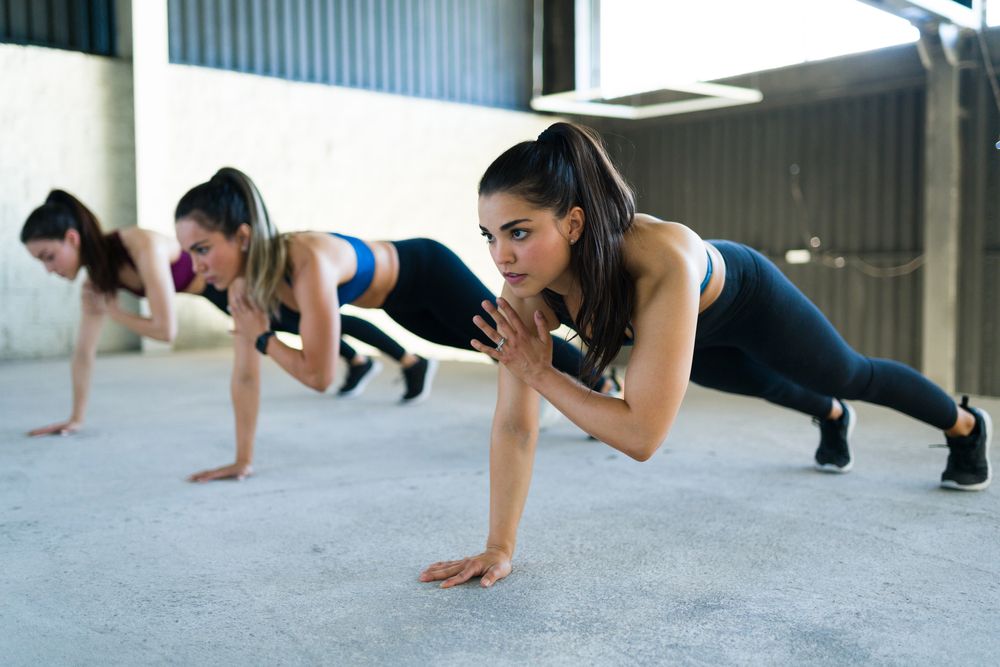
Why: This move strengthens your core and improves shoulder stability, which is essential for the plank and pushup portions of the burpee.
How:
- Start in a high plank position with your hands directly under your shoulders.
- Engage your core to keep your hips stable and prevent them from rocking.
- Lift your right hand to tap your left shoulder.
- Place your hand back on the floor and stabilize your position.
- Repeat with your left hand tapping your right shoulder.
- Continue alternating sides for the desired number of reps.
Sets and Reps: 3 sets of 20 taps (10 per side).
Plank Jacks
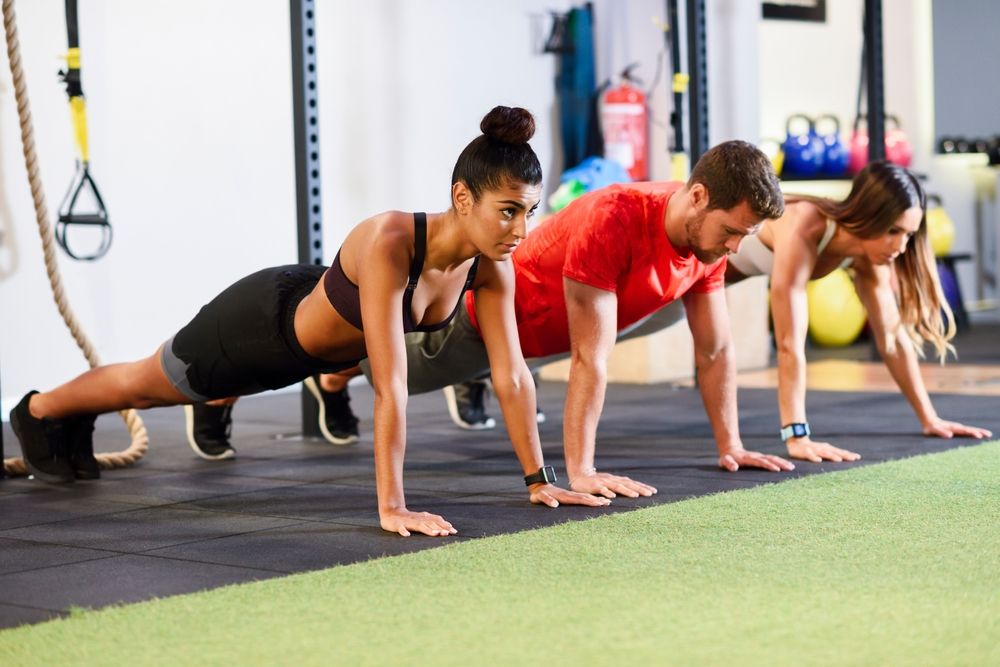
Why: Plank jacks add a cardio element to core training, helping you build endurance for the high-intensity nature of burpees.
How:
- Start in a high plank position with your feet together and hands under your shoulders.
- Engage your core and ensure your body stays in a straight line.
- Jump your feet out wide, like the bottom of a jumping jack.
- Jump your feet back together to return to the starting position.
- Keep your hips level throughout the movement to avoid sagging or bouncing.
- Repeat for the desired number of reps.
Sets and Reps: 3 sets of 20-25 reps.

